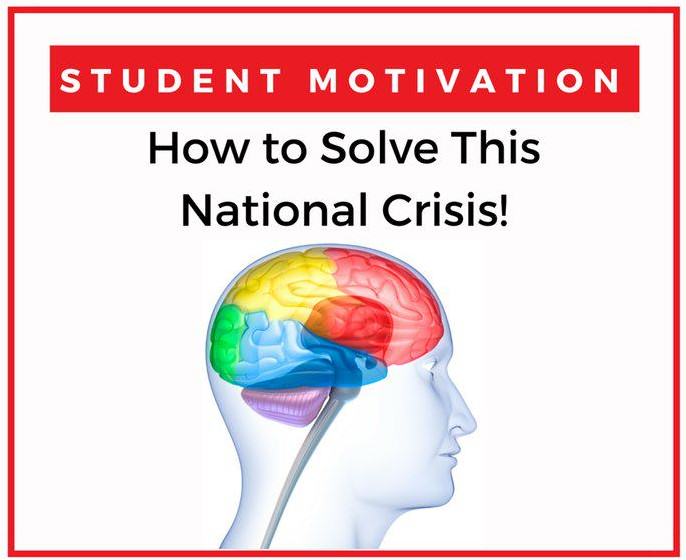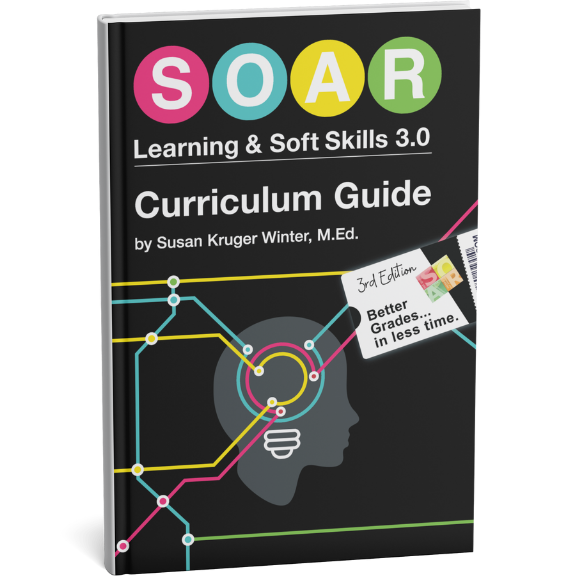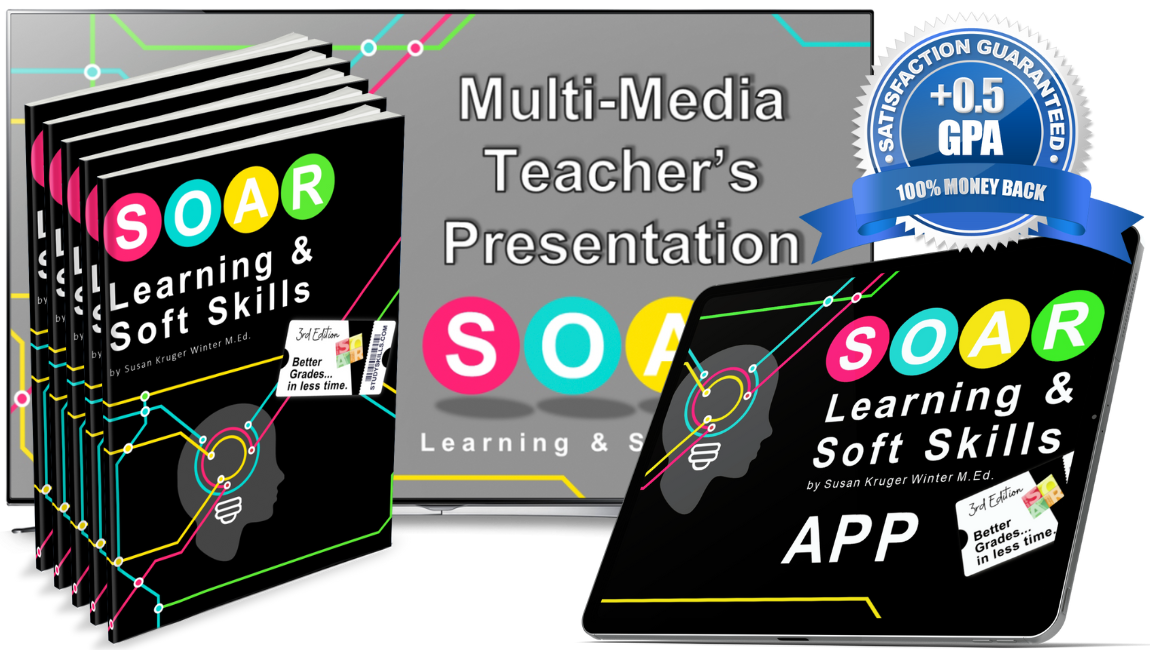How to Solve Our National Motivation Crisis
The United States’ Motivation Crisis is so pervasive; we look right through it. A fish is the last one to know he swims in water.
Likewise, the solution is so simple, you might miss its full power.
How to Solve the Motivation Crisis
We simply need to “change the conversation!” We need to stop focusing on deficiencies and what students cannot do. Instead, we must lead with strengths.
“HOW Are You Smart?”
Change the conversation to “HOW are you smart?” Simple investigations into the Theory of Multiple Intelligences open students up to a whole new way of thinking about their abilities.
This strengths-based approach to learning creates safety. Feeling “safe” is biologically required for learning.
This does not mean you ignore students’ challenges or deficiencies. Challenges are still addressed. But, when you lead with strengths, “challenges” no longer define the student. Developing an awareness of strengths lets students feel accepted for who they are, not shamed for their struggles.
Test the power of this conversation; start asking your family and closest friends, “HOW are you smart?” “What is your superpower?” Notice the changes in their body language and tone of voice. People light up with these questions! They sit up straighter. They lean in. Their eyes get brighter. Their voice goes higher. These changes are infectious!
Imagine how these simple questions transform school communities! I’ve seen it happen.
(NOTE: Adults are a little leery of these questions; the cultural expectation of modesty holds them back, at first. With adults, be prepared to share your “intelligences” and “superpowers” first to break the ice. On the other hand, the only hesitation young people tend to have is simply identifying their strengths.)
This simple question mitigates fear, ridicule, and anxiety that holds students back. It literally transforms school cultures.
This question alone yields very positive results. But, it also lays a powerful foundation for additional strategies…
Make Connections
When students are not clinging tightly to insecurities, their view of the world opens wide! They start noticing connections:
- across subject areas
- between previous life experiences and new content
- between their English Literature novel and the latest blockbuster movie
These connections are the life-blood of learning. The brain literally connects new information to things we already understand with brain wires known as neurons. When students discover connections, learning becomes nearly effortless.
Move Students Into the Green Zone
The “Green Zone” is a mental state where emotions are neutral, or better. The brain is incredibly sensitive to a wide range of conditions, but its easily swayed into the Green Zone…
How to Transition Students to the Green Zone:
- Start with strengths! Change the conversation to “HOW are you smart?”
- Teach students about the Theory of Multiple Intelligences. Encourage them to learn all about their strongest intelligences, including future careers.
- Open class with a funny story, puzzle, video, light-hearted anecdote. This helps to “wipe the emotional slate clean.”
- Allow movement. Movement generates new brain chemicals. Especially aerobic movement. (Jumping jacks are a great, classroom-friendly, aerobic exercise!)
- Encourage “pairing.” We humans are social creatures! Allowing students to learn through socializing is very Green Zone-friendly. (Learn how “pairing” has transformed our company, here.) Just be sure to avoid triggering anxiety with this one… for example, assign partners so no one feels left out.
See a previous article/video about The Green Zone, here. (It’s our most popular article!)
Provide Choices
Making choices is very powerful for inspiring motivation. Countless studies confirm that “choices” promote higher levels of performance and feelings of well-being than situations providing no choice. This is especially true in the classroom.
The opportunity to make choices sends powerful messages to students: “I matter. My opinion matters. My voice is heard.” When students do not feel empowered, they withdrawal. They become much more vulnerable to the influence of violence.
Even the simplest choices have significant impact! See my article about Disney and Dumbo, here, for a prime example of the power of very simple choices.
How to Provide More Choices in the Classroom
The following is a short list of examples of classroom choices. Of course, there are countless options, but this list can help you get started. You will notice they are all: 1) truly simple, and 2) provide options that are reasonable to manage in the classroom. Do not let their simplicity fool you; even “small” choices are very powerful!
- Do you want to use a paper or electronic planner?
- Do you want to read the chapter by yourself or with a partner?
- Do you want to read Chapter 4 on your own, or have small groups role-play each section of the timeline for the whole class?
- What color binder do you want: red, yellow, blue, or black?
- Do you want to do homework on the bus or socialize with your friends and do homework later?
- When will you “power down” at home: from 4:00-6:00 pm, 6:00-8:00 pm, or 4:00-5:00 and 7:00-8:00?
- Choose your own seat.
- Choose topic one, two, or three for your writing assignment.
- Will you take notes with a pen, pencil, colored pencil, or thin-line marker?
- Do you want to do 8 or 10 practice problems for your math test?
- Do you want to answer the Lesson Review questions on paper or out loud?
- Do you want to do your Exit Presentation as a report, make a slide presentation, or create a website?
- Do you want to work independently, or with a partner?
- Do you want the lights on or off?
- Do you want to have music on or off?
- Would you rather work on the floor or in your seat?
- Do you want to do your assignment by writing, reading it out loud, or acting it out?
There are endless solutions for inspiring motivation in the classroom, but they all start with US, not the student. We must always remember that motivation is a biological requirement of learning.
The simplest way to make a DRAMATIC impact on student motivation is simply to change the conversation. Ask students “HOW Are You Smart?” You will be amazed at the transformations that unfold when you seek to find every student’s strengths. From there, opportunities for nurturing motivation and confidence will naturally evolve.
Emotions truly are the on/off switch to learning!
Sincerely,
Susan Kruger Winter, M.Ed.
Six Steps
Conquer the Chaos
Get Our Free Guide & Information on...
 How to Organize & Motivate Students for Success
How to Organize & Motivate Students for Success
"*" indicates required fields
Get Our FREE Curriculum Guide!
The SOAR® Curriculum
The most critical learning, organizing, and communication skills needed for school. Learn more here.
Who’s Using SOAR®?
SOAR® Guarantee
Click here to learn more.





